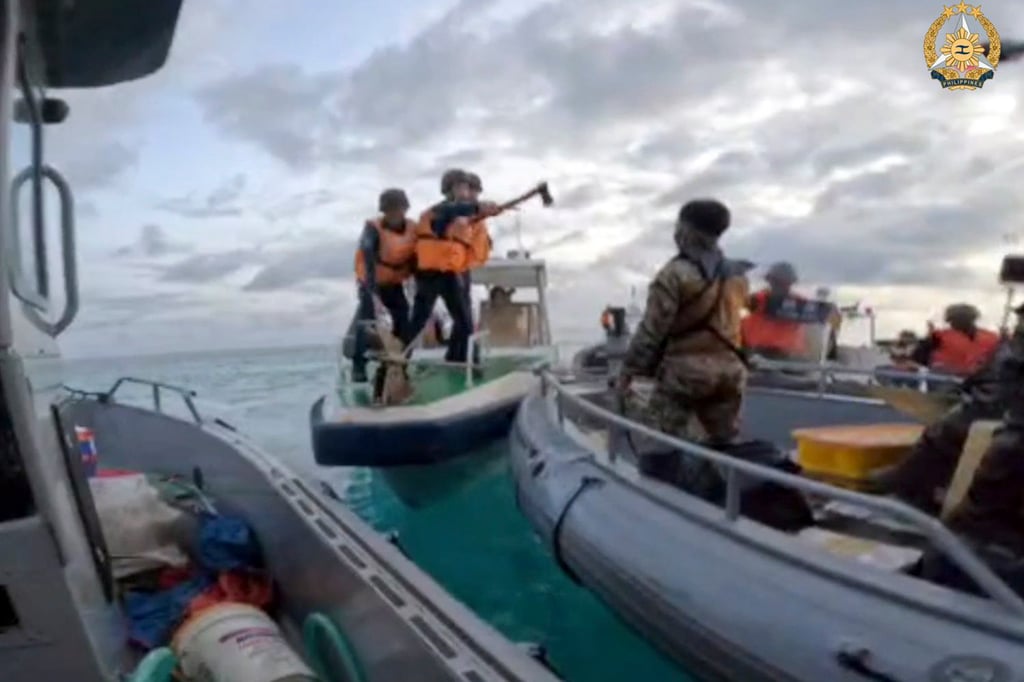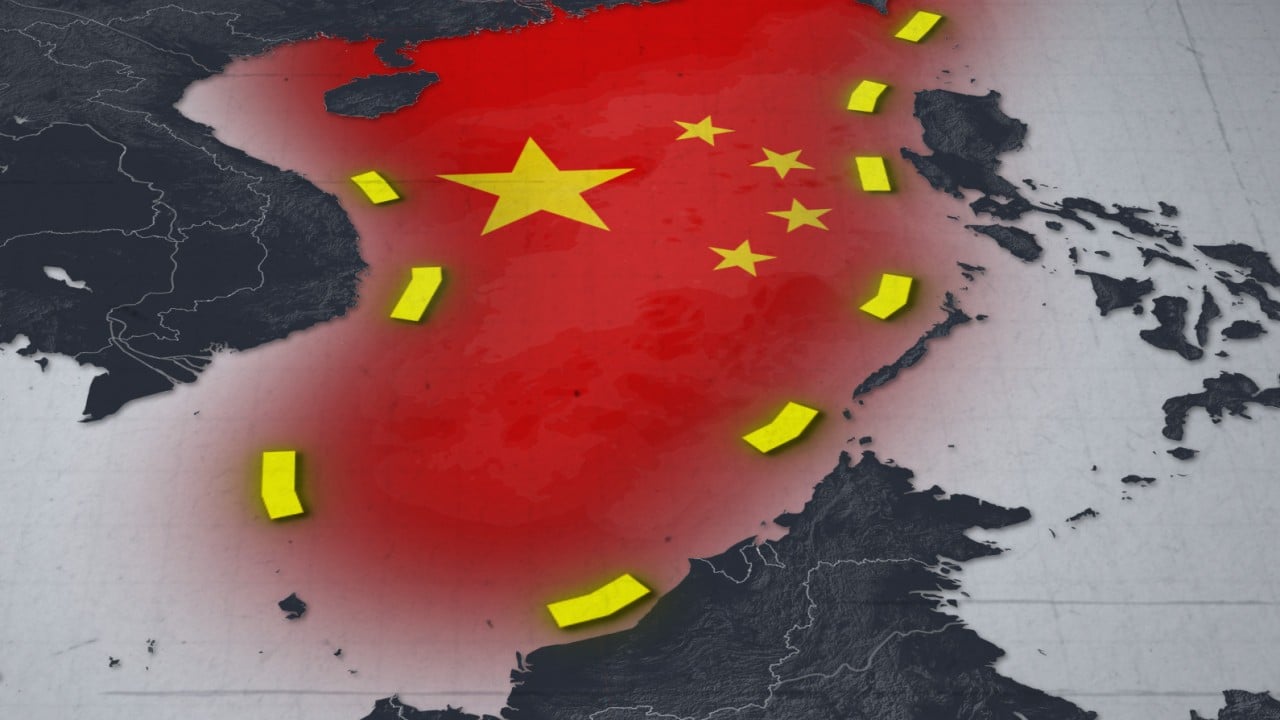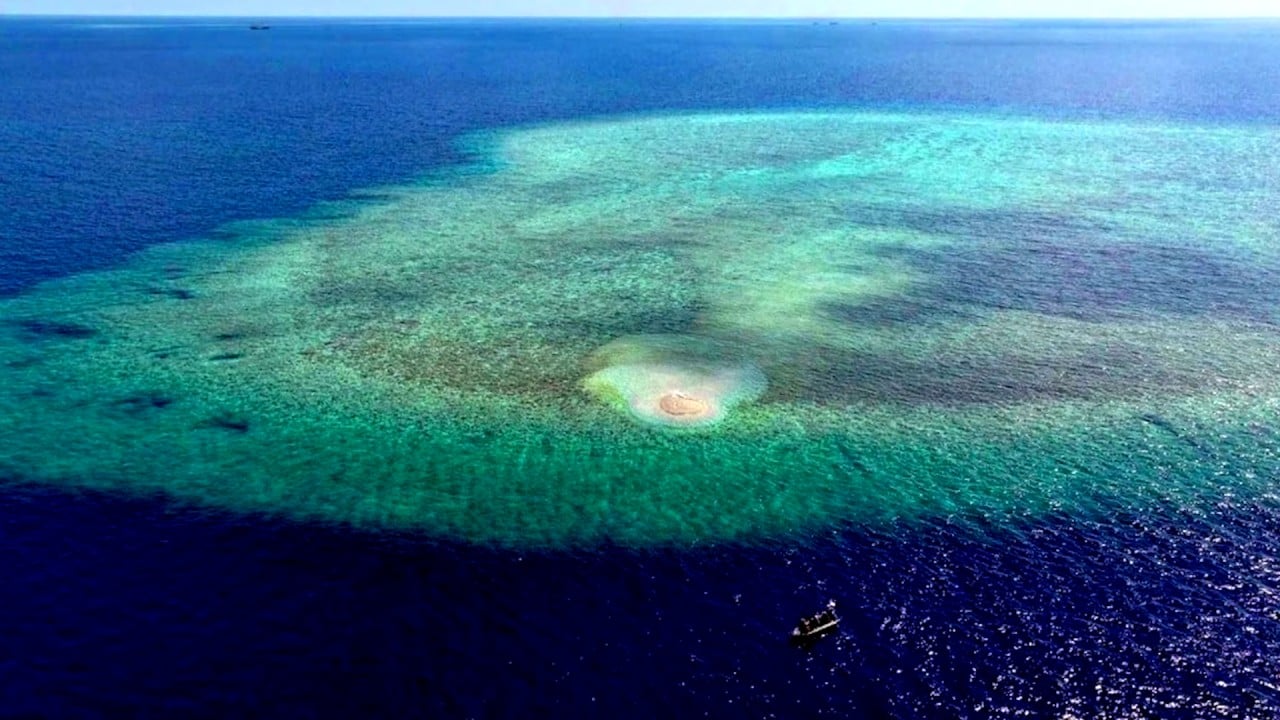Tensions are mounting in the South China Sea – a hotly contested and globally significant waterway that’s become a flashpoint for conflict. In the third instalment of a four-part series we look at some of the claimants’ legal efforts to support their case.
In recent weeks, two of the countries with competing territorial claims in the South China Sea have asked the United Nations to recognise that the outer limits of their boundaries should extend beyond 200 nautical miles (370km).
Vietnam’s proposal in July to the UN Commission on the Limits of the Continental Shelf (CLCS) followed a similar submission the previous month by the Philippines. Both could bring added complexity to the tensions surrounding the disputed waterway.
Hanoi and Manila are each seeking formal recognition that they have an extended continental shelf (ECS) into a contested part of the South China Sea which is subject to multiple claims – including from both parties, as well as Beijing.
The latest requests bring the total ECS submissions in the South China Sea to five, with the first dating back as far as 2009. None have been resolved and the outer limits outlined in the proposals frequently overlap.
Success would grant the submitting states exclusive sovereign rights to the natural resources of their continental shelves. But to complicate matters further, the CLCS will not review submissions that are embroiled in land or maritime territorial disputes.
While there is a strong possibility that the submissions may not be actively reviewed by the CLCS, Chinese experts are keeping a keen eye on the potential repercussions they could have on Beijing’s claims in the waters.
According to an associate professor in Guangzhou who specialises in the South China Sea and asked to remain anonymous, the number of ECS submissions related to the waterway could continue to grow and Beijing should not overlook them.
“Staking claims to ECS is poised to deepen the intricacies of the already complex dispute. Each nation involved is keen to innovate strategies to bolster its maritime claims, with the ECS claim to emerge as a key tactic,” he said.
“This approach could potentially open up a new front for verbal skirmishes among the claimant countries.”
The area within 200 nautical miles of a state’s coastline is generally recognised as its exclusive economic zone, with the waters beyond designated as the high seas.
However, if a state has a continental shelf that extends beyond 200 nautical miles of its coastline, the CLCS is the only viable channel to establish sovereign rights over the area.
The 21-member body, established under the United Nations Convention on the Law of the Sea (UNCLOS) includes experts on geology, geophysics and hydrography, who consider geophysical and bathymetric information presented by claimants.
However, the CLCS “is purely a scientific body, not a legal body”, explained Chen Chen-ju, associate professor of National Chengchi University’s College of Law in Taiwan.
“The roles of its members differ from those in courts or arbitration tribunals. Hence, the commission is not tasked with dispute settlement,” she said.
The CLCS reviews the submitted material and determines whether it meets the requirements laid out in the convention, before making its recommendations – which countries can choose not to follow or make a revised submission, but that will become binding if accepted.
“Although the legal term is a ‘recommendation’, it comes with legally binding effect, which means that the outer limits will become a fixed boundary separating seabed areas within national jurisdictions and the international seabed areas, which are reserved for the common heritage of humanity,” Chen said.
The Philippines’ claims have so far been rejected by China, Vietnam and Malaysia and other states are likely to reject the Vietnamese claim, potentially stalling the progress of both submissions.
According to maritime experts, considerations of the unilateral submissions from the Philippines and Vietnam are likely to be deferred by the CLCS, which has yet to review more than 40 claims accumulated internationally since 2001.
Liu Dan, a research fellow at Shanghai Jiao Tong University’s KoGuan School of Law, said that even an uncontested ECS submission usually took years to consider because “the caseload is piling up for the commission to review”.
But coastal states were entitled to file submissions and it was worth doing, because of the potential benefits of obtaining maritime entitlements from a legally recognised continental shelf, she said.
“Filing a claim poses no risk to the Philippines, as the worst-case scenario is that the claim might not be considered by the commission. However, it could help attract support from other countries, helping to reinforce its footing in the South China Sea.”
Chen said Manila’s ECS submission could be interpreted as a continuation and practical application of its South China Sea lawfare – which culminated in a 2016 arbitration ruling in its favour, a result Beijing has not accepted.
According to Chen, “by inheriting the results of the arbitration finding and proposing that the seabed surrounding features [in the Spratly Islands] is within part of its ECS, Manila is leveraging the arbitration to further advocate its South China Sea claims”.

In the anonymous Guangzhou academic’s view, the invocation of the ECS represents a strategic move from Manila to effectively challenge Beijing, “compelling it to stretch its resources in response”.
“Such an approach of extending its continental shelf is a coordinated move together with the arbitration ruling to further cause harm to Beijing’s stance,” she said.
Expert opinion diverged on Hanoi’s impetus for following Manila’s lead and seeking recognition of its own extended continental shelf, and whether the claimants were coordinating their submissions to the CLCS.
Isaac Kardon, senior fellow for China studies at the Carnegie Endowment for International Peace, said that Vietnam and the Philippines might demonstrate a certain level of coordination, or at least convergence of interests in their latest actions.
“There appears to be some coordination between them, or at least shared sympathies and momentum towards making clear, legal claims that contradict and counteract China’s opaque claims,” he said.
The associate professor in Guangzhou contended that Vietnam’s submission was likely to have been approved by President To Lam to score domestic political support by increasing his country’s posture in the dispute.

Ding Duo, deputy director of the Institute of Maritime Law and Policy at the National Institute for South China Sea Studies, said Vietnam’s submission was “clearly a countermeasure” to the Philippines’ ECS claims.
“The Philippines’ submission is notably extensive and stretches westward, encroaching significantly into the area Vietnam recognises as its 200 nautical mile exclusive economic zone and continental shelf boundaries,” he said.
But Ding noted that the timing was opportune for Hanoi and it had its “nuanced calculations”.
“The Philippines’ current maritime provocations have significantly dominated China’s attention and energy. Consequently, should Vietnam lodge a similar claim now, it is less likely to become the main focus of attention,” he said.
“This strategic timing means Vietnam can assert its claims without becoming a main target of China’s, [as opposed to] if it were to proceed alone at a different time, which might spotlight Vietnam undesirably.”
According to Shanghai Jiao Tong University’s Liu, the latest ECS claims could lead to a “spillover effect”, encouraging other claimant states to make similar moves.
The enduring negative impact of the 2016 arbitration case, coupled with the repercussions of such ECS claims in the region, could pose a serious threat to Beijing’s claims, she said.
“[These factors] could potentially encourage other claimants to overlook China’s legal assertions in the South China Sea, opting to partition and gradually encroach upon the waters through ECS claims or bilateral or multilateral boundary agreements.”
Liu was referring to the 2009 maritime boundary agreement between Brunei and Malaysia, as well as the 2003 continental shelf delimitation agreement between Indonesia and Vietnam.
In late 2022, Hanoi and Jakarta also successfully finalised long-running negotiations to delineate the borders of their exclusive economic zones in the region.
Strategically, China could not afford to disregard the ECS claims, even though the possibility they would be reviewed by the CLCS might be minimal, Liu said.
“China should attach great importance to such submissions. They are essentially tests to determine its stance and resolve amid the ongoing and intense disputes in the South China Sea.”
Experts noted that China had yet to publish its baselines in the broader South China Sea region, a necessary step before the breadth of a maritime territory can be measured under UNCLOS.
Beijing has only specified a set of base points in the Gulf of Tonkin, the northwestern portion of the South China Sea where Beijing and Hanoi signed a delineation agreement in 2000.
Beijing has also not clarified the legal meaning of its vast nine-dash line, which encompasses up to 90 per cent of the disputed waters, stretching about 2,000km (1,240 miles) from the Chinese mainland to within just a few hundred kilometres of the Philippines, Malaysia, and Vietnam.
Ding noted that baseline information was a prerequisite for the CLCS to make a determination. China’s lack of defined baselines would present a legal and technical challenge when it tried to submit its own ECS claims, he said.
According to Chen, Beijing could hit a bottleneck in its narrative if it advances ECS claims in the southern part of the South China Sea. It may become difficult to reconcile such submissions with the established stance of its nine-dash line, she said.
Beijing may opt out of submitting its own ECS proposals in the Spratly Islands, avoiding the need to clarify the legal justification of the nine-dash line and preserve the flexibility of its interpretation, Chen said.
Ding said another calculation that Beijing may be making in not actively seeking the validation of an ECS lies in the fact that such submissions are not conducive to solving maritime disagreements among the claimant states.
“China’s primary priority is to tackle issues of territorial sovereignty and manage conflicts effectively,” he said. “Ultimately, the path to resolving the disputes will necessitate a return to the negotiation table and claimant states engaging in thorough consultations.”




